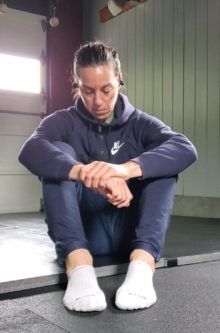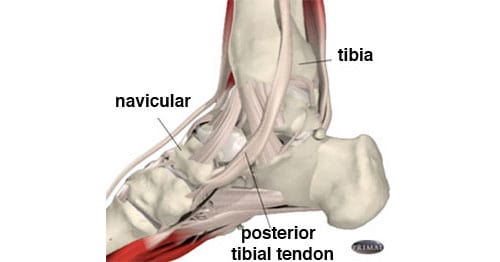Asymmetry. Up Leg. Compression. Push Down. Space. Rotational Organization. These all describe the physics of one half of the body accepting load, and one half of the body avoiding load. The first time I wrote about this, I referred to… Read more ›
The first post in this series asked if a pigeon toe was friend or foe. It is certainly a strategy, an adaptation that has a purpose. For me, my half with the pigeon toe also carried my biggest problems, particularly… Read more ›
This piece serves as the follow up to How To Push Down. When we are talking about compression, we are also talking about tension. It is the interaction of these two push-pulls that creates suspension. Otherwise everything would collapse. … Read more ›
This post serves as a follow up to: A Path Towards Harm. Otherwise titled: The things I did wrong when I didn’t pay attention or have compassionate patience. The tag to this blog used to read, “fix yourself.” But… Read more ›
Paying attention brings awareness that paves the way for learning. While the task of directing attention typically goes to teachers, the chore of controlling attention falls on the student. We are bored by things that don’t seem to apply to… Read more ›
A quick conceptual piece from the mind of Nicole Uno. Like many sensational metaphors she offers me, I cannot quite make sense of things until I feel it’s application and usefulness. Instead of trying to force the issue, I typically… Read more ›
This is another concept coming from the astute observations of Nicole Uno. The medical, fitness, and wellness worlds are fixated on correcting imbalances. Amidst all the readily available treatment plans, too few remain curious about why so many asymmetries… Read more ›
If you’re curious about why only half a workshop I’ll tell that story at the end. Tom Weksler’s Movement Archery workshop was a lesson in angular momentum. We rolled, we spun, we bruised our pointy bits. Imagine an archer… Read more ›
The low gait might be the truest test of healthy knees. It requires full flexion under full bodyweight while pulling the center of mass. A single knee is responsible for stabilizing load while the feet and ankles pivot and reposition.… Read more ›
Balance is a movement intelligence. It relies on systemic interdependence — that your parts work well enough and that the body can efficiently execute interpretations from the brain. Creating feet that grip and then utilizing them in skill-based, eyes closed situations bridges… Read more ›
Joint ‘popping’ is a curious thing. It alarms without hurting. Especially when you realize it wasn’t there before. You notice something is different when you do that particular thing in that particular way. The different becomes ‘less than’ when… Read more ›
Doing without knowing. Playing, creating, learning. Adjusting and adapting. Describing Fighting Monkey is an act in organizing verbs. Everything overlaps and intertwines and is a wonder. The only certainty you are left with is that you have experienced something good… Read more ›
Movement overlaps. Brain work = joint work = speed, power, strength, and coordination work. We have structures and we have capacities. Our practice establishes the abilities of both. There is a general consensus that if your parts work better you’ll… Read more ›
Body control is all the rage. A popular want is increasing active range of motion. People want to get there so they can do stuff there. Functional Range Conditioning uses slow, controlled movement to examine individual joints, build capacity in… Read more ›
Increasing dorsiflexion is a popular yet frustrating goal. Getting the ankles to do more lessens the strain on the knees, and is an important factor in being able to drop into a deep squat — an often used marker of overall… Read more ›
featured photo credit: @movnat instagram (Carlos Condit) The ground is a safe, secure place. It is not something to be avoided or stepped lightly onto. It can easily absorb our falls and placements and pressures. If we become afraid… Read more ›
In part one of this series, we focused on HOW to create an arch or shortfoot position. Here’s how you can pattern it into your motor subconscious: 1. Single Leg Balance Sequence Create shortfoot and hold throughout the duration. … Read more ›




















